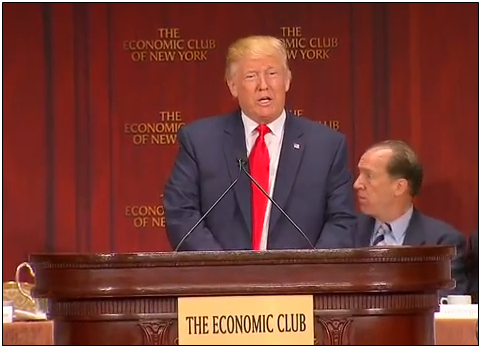By Rick Manning
905,000 more people were employed in one month. 341,000 fewer people were unemployed in one month. 575,000 more people joined the labor force in one month.
These almost impossible results were reported by the U.S. Department of Labor’s Bureau of Labor Statistics for the month of September. That’s right, last month the Labor Department’s household survey showed a stunning increase in the number of people employed with many of these new employees coming directly from the ranks of those previously not participating in the workforce.
As someone who has been consistently skeptical of BLS employment survey results, it would be hypocritical to go whole hog in praising the direction of the economy based upon this one result, but the trend line seems increasingly clear.
If the September numbers hold up, America is in full-fledged recovery, and Americans who had previously seemed to have given up hope, are heading back to work. And it is not just some Americans. Teenagers and African-Americans, who usually are the last to benefit from an employment upswing, paced the job gainers with showing 0.7 percent increases in employment. And those who considered themselves to be part-time employees for economic reasons, dropped significantly in September by a whopping 133,000 people.
To put this good news in broader perspective, since Donald Trump became President in January of 2016, 2.2 million more Americans have jobs than before he took office, and 834,000 fewer Americans are unemployed. More confirmation of this increased ability for Americans to fend for themselves is found in the food stamp data which shows that 2.2 million fewer people are on food stamps than a year ago with a savings of more than $15 billion for the taxpayers. Meanwhile government revenues are estimated to have increased by about $200 billion in Fiscal Year 2017, a windfall that will accelerate should the employment data hold up over time. This wealth dividend should have the virtuous effect of increasing revenues and lowering government support costs squeezing the deficit downward as a result.
But the picture is not entirely rosy as 5.6 million Americans who are not in the labor force still want a job now, a sign that slack still remains in the labor force, allowing the economy plenty of room to grow.
Also, the havoc caused by Hurricanes Harvey, Irma and Maria respectively in Texas, Florida, Puerto Rico and the Virgin Islands will continue to slow some aspects of the economy not only in those afflicted areas, but throughout the nation as the resulting gasoline price increases are still settling downward. However, as perverse as it sounds, the construction spending, vehicle and other durable goods purchases resulting from the destruction should increase in the Houston area according to Greater Houston Partnership Senior Vice President of Research Patrick Jankowski.
Harvey and Irma had one major negative impact on the BLS jobs data, due to businesses being closed during September, the establishment survey which measures job creation showed that the overall economy lost 30,000 jobs in the same month that the unemployment survey showed 905,000 more people having jobs.
BLS was quick to explain the anomaly as being a direct result of the short-term shuttering of part of the economy and the differences in the questions asked job creators versus workers writing, “In the establishment survey, employees who are not paid for the pay period that includes the 12th of the month are not counted as employed. In the household survey, persons with a job are counted as employed even if they miss work for the entire survey reference week (the week including the 12th of the month), regardless of whether or not they are paid. For both surveys, national estimates do not include Puerto Rico or the U.S. Virgin Islands.”
If the economy is surging the way it seems to be, the Trump economic effect will be in full force as an increasingly tight labor market should create increased wage growth, while the overall inflation rate remains relatively stable at 1.9 percent over the past twelve months.
Once again, it is wise to remain skeptical of the Bureau of Labor Statistics monthly job reports, but if September’s numbers hold up, the economy could be in for a burst of new vibrancy as a million new job holding consumers begin to exercise their purchasing power with all the residual benefits to the rest of the economy. The October report should tell the tale of whether September was fool’s gold or the real thing.
Richard Manning is President of Americans for Limited Government







